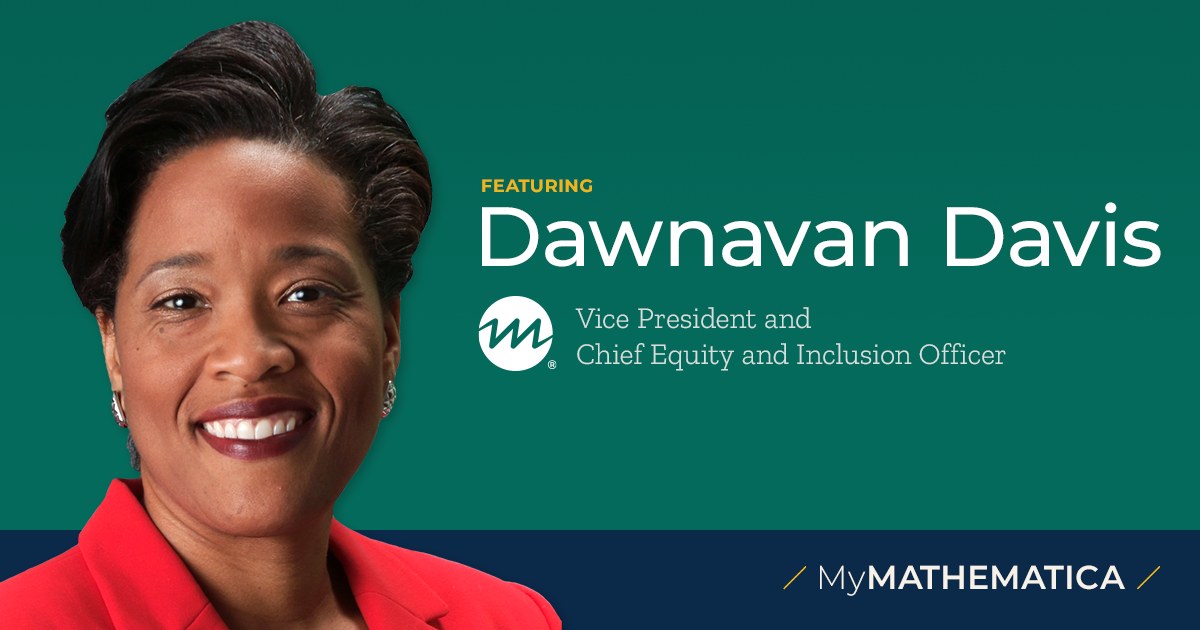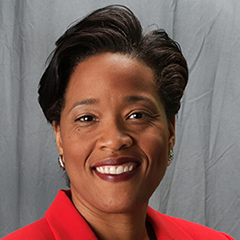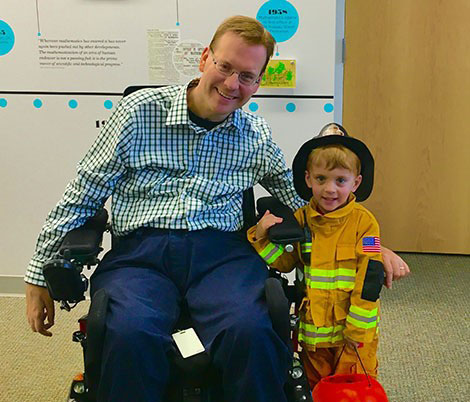When I joined Mathematica in the spring of 2021, I came with a background in academic research, a passion for community health improvement, and the knowledge that diversity, equity, and inclusion have the power to exponentially strengthen impact. I had seen this in academia, where my work focused on health disparities and chronic disease prevention in marginalized communities and where I had founded a non-profit organization focused on health equity and the social determinants of health. And I continued to see the transformative powers of DEI as I moved into becoming a DEI executive, working with organizations committed to creating more welcoming and inclusive workplaces. The setting didn’t matter. Where DEI practices were applied, the evidence of its benefits was clear: places advanced, people thrived, and the work evolved.
At Mathematica, centering DEI means being intentional about the research questions we ask—do they represent the full array of perspectives possible within a project? Will they lead us to solutions that advance equity? It means engaging with community partners at all levels of an organization so that we can utilize the breadth of their expertise as well as share our own. And it means sometimes thinking outside the box to find project leaders and building teams with an eye to fresh perspectives and approaches, such as when our recent work on informal childcare in Detroit was led and carried out by a multicultural group of our colleagues, who also drew on diverse work experiences to inform the work.
Even before I came to Mathematica, I knew of its reputation for conducting the highest caliber of research and for the products and services it offered. I had tremendous respect for what the organization was doing to support equitable policy and research practices around the world. But when I came on board, what intrigued me was the company’s future—how it was poised to do transformational work in DEI not only internally, but as a leader in the research, evaluation, and consultancy field. I saw that a formalized enterprise DEI strategy could be foundational to Mathematica’s work because of what the two have in common.
DEI demands that researchers continually question assumptions and tackle new challenges as the world changes and evolves. This is something Mathematica has been practicing for more than half a century—rigorous research means dynamic research, where new methods and goals are valued and practiced as they emerge. Cultural transformation around DEI happens when people bring their entire selves to work and contribute from the breadth of their experiences. It’s a process that’s already fueling progress at Mathematica and showing us new ways to look at our work. Our contact-tracing partnerships in diverse communities this past year offer on-the-ground examples. The work has been led by Mathematica colleagues working with partners from many different backgrounds, allowing us to tailor programs to the needs of a community in ways that succeed in large part because they are highly specific and intuitive. More broadly, this is part of our overarching commitment to conducting research with communities, rather than on them. It’s more equitable and just, and it’s better research too.
Nonetheless, Mathematica is still relatively early in its DEI journey. As a company of more than 1,500 employee-owners who come from many different backgrounds and have diverse perspectives and abilities, we are working to make strides together. Right now, we are in the process of identifying and clearly expressing the DEI goals we intend meet related to our people, our workplace, our products and services, and our external presence. It’s a holistic approach. A DEI strategy can be sequenced, but there has to be a plan for the whole as well as the parts. A DEI journey is complex and layered. But when DEI initiatives succeed, they expand beyond the workforce and workplace, and they strengthen broader initiatives to bring about racial, economic, and environmental justice. The potential for this is what drives my passion for the work that I do.
In the day-to-day, that translates into the job of not only helping my colleagues see how we can achieve DEI goals together across our company and our research, but also in collaboration with foundations, agencies, and other community organizations that share our commitment. Through these partnerships, we have an opportunity to continually learn as well as share what we know with others. This exchange of knowledge is foundational to both Mathematica’s way of working and to the work of DEI. It means listening, learning, and applying what we now know—and acknowledging what we don’t. In fact, it’s a research principle we use in our Learn, Innovate, Improve method—another example of DEI principles being in harmony with rigorous research practices.
To me, being a leader in the DEI space feels a little like running one leg of a relay. The work that I do is shared work. It must be because no one person can or should transform an organization on their own. I hope to lead an impactful and collaborative DEI effort along with my colleagues at Mathematica and our partners, so that together we can hand off the baton to the next generation of leaders at different and better place.



